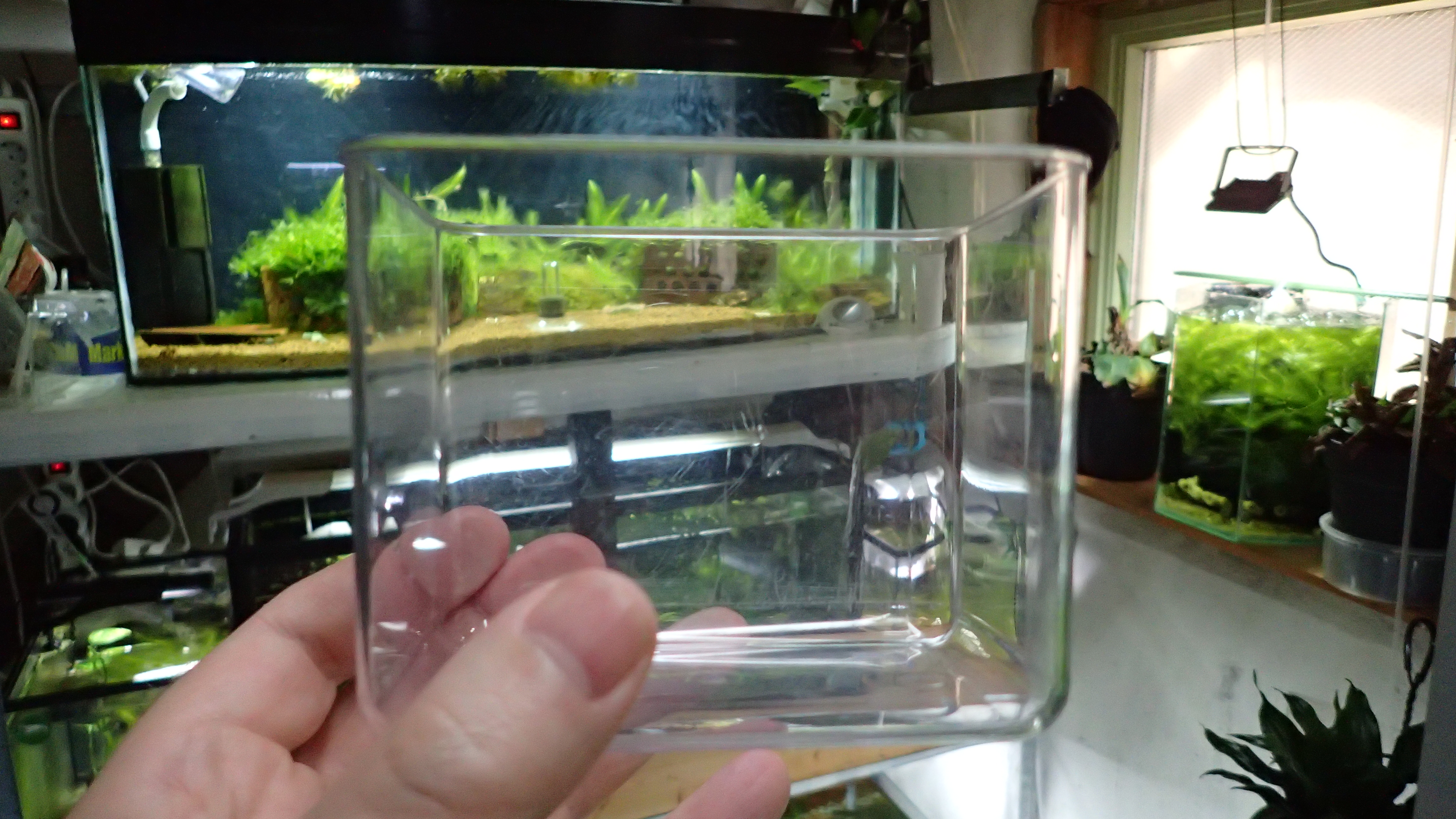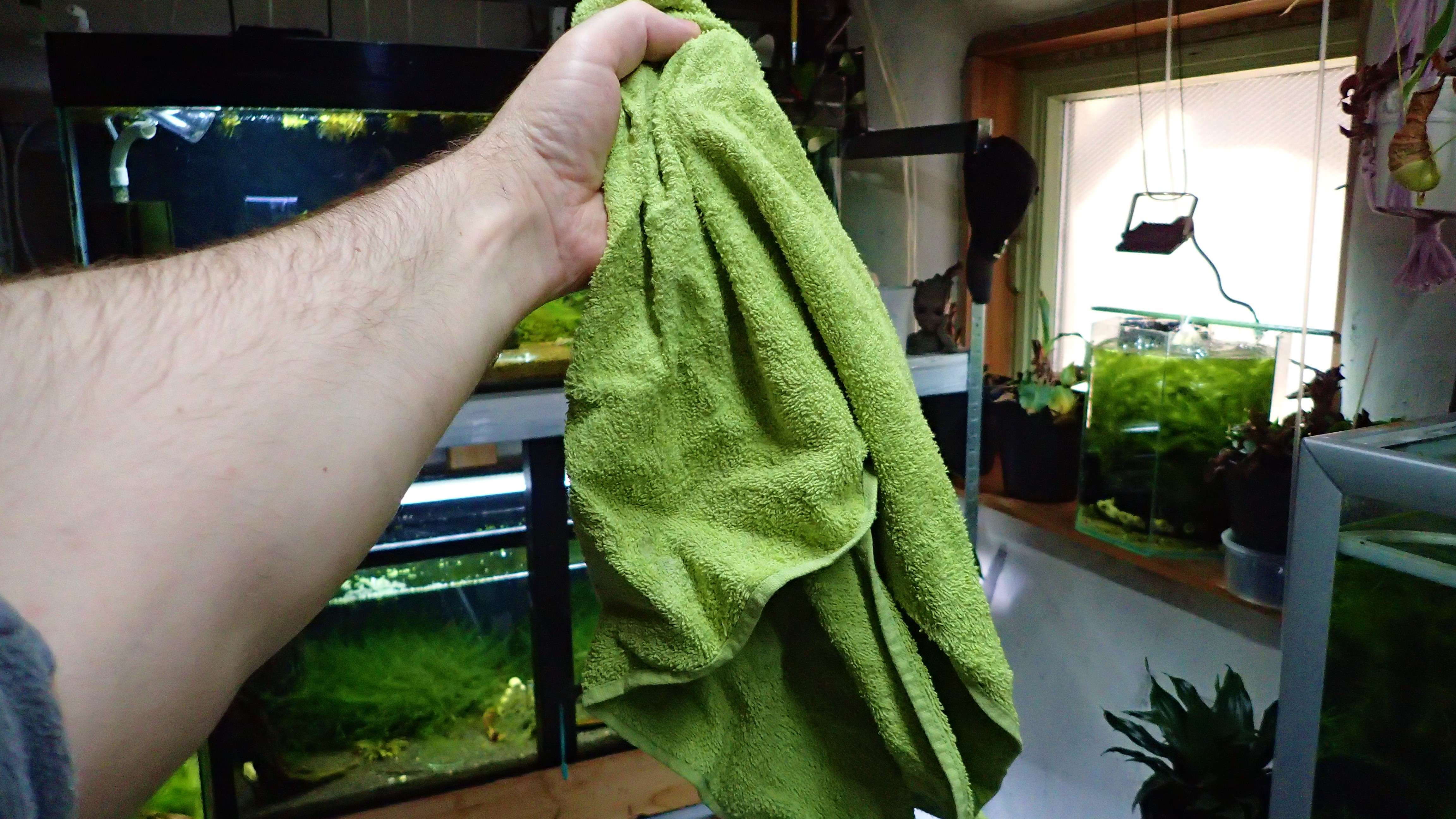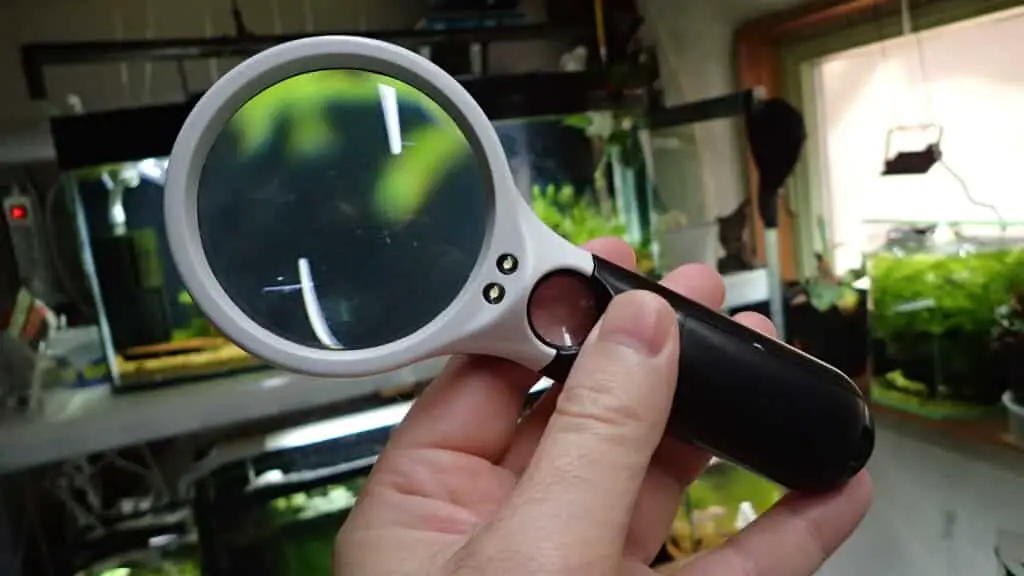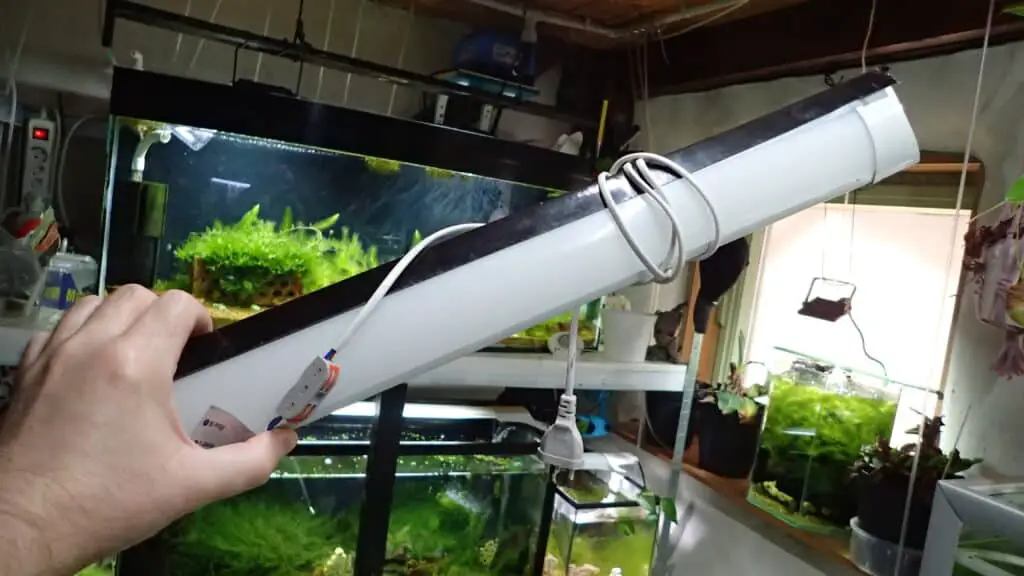I. Do You Need To Kill Shrimp
Culling is an essential practice in shrimp keeping that involves selectively removing shrimp that do not meet specific criteria. It helps maintain a shrimp population’s health and genetic diversity, which is essential for successful breeding and growth.
However, the traditional method of culling involves killing unwanted shrimp, which raises ethical concerns among some shrimp keepers.
The practice of killing shrimps can be distressing for many people who keep them as pets. It can also be seen as a waste of life.
One such alternative method is the use of a cull tank, which is a separate tank designed specifically for selectively removing shrimp without killing them. A cull tank allows shrimp keepers to observe and monitor the shrimp population closely, while still maintaining a healthy and diverse population.
In this blog post, we will explore the benefits of using a cull tank in shrimp keeping, as well as provide step-by-step instructions for setting up and using one. We will also discuss the different criteria that can be used to cull shrimp, such as color, size, or genetic traits.
The name given to shrimp that are to removed from a tank are called culls.
By the end of this post, readers will have a better understanding of how to use a cull tank as a humane and effective alternative to killing shrimp.

II. What is a cull tank?
A cull tank is a separate tank that is used to selectively remove shrimp from a population without killing them. The purpose of a cull tank is to maintain a healthy and diverse population of shrimp while selectively removing individuals that do not meet certain criteria.
These criteria may include size, color, or genetic traits, depending on the goals of the shrimp keeper.
A cull tank typically has a smaller size compared to the main shrimp tank and is designed to provide a safe and healthy environment for the shrimp. The tank should have adequate filtration, substrate, and hiding places for the shrimp to feel comfortable and secure.
The water parameters in the cull tank should be similar to those in the main tank to minimize stress on the shrimp when they are transferred.
There are many benefits to using a cull tank in shrimp keeping. One of the main benefits is that it allows for the maintenance of genetic diversity within a population.
By selectively removing shrimp that do not meet certain criteria, such as color or size, the shrimp keeper can prevent the spread of undesirable traits within the population. This is especially important for shrimp that are bred for certain characteristics, such as color or pattern.
A cull tank can also be used to maintain the overall health and quality of the shrimp population. By selectively removing weaker or less healthy individuals, the shrimp keeper can improve the overall health and vigor of the remaining population.
This can lead to better breeding success and overall growth and development of the shrimp.
To use a cull tank effectively, the shrimp keeper must first identify the criteria that they wish to use for culling. This may involve visual inspection of the shrimp, measuring their size, or observing their behavior.
Once the criteria have been identified, the shrimp keeper can observe the shrimp population in the main tank and selectively remove individuals that do not meet the desired criteria.
A cull tank is a valuable tool for shrimp keepers who want to selectively remove individuals from their shrimp population without killing them. It provides many benefits, such as maintaining genetic diversity and maintaining the overall health and quality of the population.
By using a cull tank, shrimp keepers can cull their shrimp more effectively, leading to a healthier and more vibrant shrimp population.

III. Setting up a tank
When setting up a cull tank, there are several key considerations to keep in mind. These include the size of the tank, the type of filtration used, and the substrate and hiding places provided for the shrimp.
The size of the cull tank will depend on the size of the main tank and the number of shrimp that need to be culled. As a general rule of thumb, a cull tank should be about one-third the size of the main tank. This will provide enough space for the shrimp while making it easier to observe and monitor their behavior.
The type of filtration used in a cull tank is also important. A filter that is too strong may create too much water movement and cause stress to the shrimp. A sponge filter or air-driven filter is often recommended for cull tanks, as they provide gentle filtration and do not create too much water movement.
or air-driven filter is often recommended for cull tanks, as they provide gentle filtration and do not create too much water movement.
When creating a safe and healthy environment for the shrimp in the cull tank, it is essential to pay attention to the water parameters. The water should be similar to that in the main tank, with a pH range of 6.5 to 7.5 and a temperature range of 70 to 80 degrees Fahrenheit depending on the shrimp species.
The substrate should be fine-grained to allow the shrimp to search for food, and hiding places should be provided to help the shrimp feel secure.
To transfer shrimp from the main tank to the cull tank safely and without causing stress, it is important to acclimate the shrimp slowly to their new environment. The shrimp should be placed in a bag or container with some water from the main tank and slowly drip acclimated to the water in the cull tank.
This process should take at least an hour to avoid shocking the shrimp with sudden temperature or water chemistry changes.
Some people will say that step is unnecessary but why would you take the risk in not ensuring your shrimp lives and that they are comfortable in their new home without stress?
Once the shrimp have been successfully transferred to the cull tank, it is essential to monitor their behavior and health closely. This may involve observing their feeding habits, checking for signs of disease, and regularly testing the water parameters.
It is also essential to provide regular water changes to maintain good water quality and prevent the build-up of toxins.
Don’t get lazy because you think it’s okay its just a cull tank.
Setting up a cull tank requires careful consideration of several factors, including tank size, filtration, substrate, and water parameters. By following these guidelines and providing a safe and healthy environment for the shrimp, the shrimp keeper can effectively use a cull tank to selectively remove individuals without causing harm.
Proper acclimation and monitoring of the shrimp will also help ensure their health and well-being in the cull tank.

IV. Culling
Once the cull tank is set up, shrimp keepers can begin to remove individuals based on specific criteria selectively. Several different criteria can be used to cull shrimp in the cull tank, including color, size, genetic traits, or behavior.
Color is one of the most common criteria used for culling shrimp and this is what I always go to first because as a half-blind shrimp keeper this is the easiest thing for me to spot.
Size is another important criterion, as it can indicate the health and growth potential of the shrimp. Shrimp that are significantly smaller than their peers may have health issues or genetic defects.
Genetic traits can also be used for culling shrimp, especially for those who are breeding shrimp for specific characteristics. This may include selecting for traits such as high fertility, faster growth rates, or unique color patterns.
Each criterion for culling has its own importance, and the specific criteria used will depend on the goals of the shrimp keeper. By selectively removing individuals that do not meet the desired criteria, the shrimp keeper can improve the overall health and quality of the shrimp population and achieve their breeding goals.
To help shrimp keepers effectively use different criteria for culling, we have created a table that summarizes the criteria, target, and method for each culling technique. This table can guide shrimp keepers to identify the specific criteria they wish to use for culling and the method for selectively removing individuals.
| Criteria | Target | Method |
|---|---|---|
| Color | Specific color or pattern | Visual inspection |
| Size | Size relative to peers | Measuring with a ruler |
| Genetic traits | Desired traits, such as high fertility or unique color patterns, deformaties | Visual inspection and genetic testing |
| Behavior | Abnormal or aggressive behavior | Visual observation |
To use the table effectively and efficiently, shrimp keepers should first identify the criteria they wish to use for culling. This may involve identifying the desired color or pattern, measuring the size of the shrimp, or observing their behavior.
Once the criteria have been identified, the shrimp keeper can use the appropriate method to remove individuals from the cull tank selectively.
It is crucial to keep in mind that culling should be done selectively and not excessively. Removing too many shrimp from the population may lead to a loss of genetic diversity and weaken the overall health of the population.

Tools That Are Handy To Have That I Use
- Shrimp-safe net: A net that is designed specifically for shrimp and other small aquatic livestock. It is essential to use a shrimp-safe net to avoid harming or injuring the shrimp during the transfer process.
- Clear observation container: A clear container, such as an acrylic container, that can be used to observe the culled shrimp. This allows for a closer inspection of the shrimp and makes it easier to identify specific criteria, such as color or pattern.
- Lighting: A light source that can be added under or to the side of the observation container to better illuminate the shrimp. This can be helpful for observation and photography purposes.
- Stool: Save yourself from back pain by using a stool at the correct height. (Mechanics stools are the best)
- Magnifying Glass: A visual aid that will help you view the shrimp better.
- Towels: Have a towel on your knees, moving shrimp from tank to container, you will get drips.

V. Cull Shrimp For Sale
Shrimp that do not meet specific criteria, such as size or color, can still be valuable to other shrimp keepers who may be looking for breeding stock or are simply interested in keeping a diverse population of shrimp.
By selling these shrimp, the shrimp keeper can offset the cost of their shrimp keeping hobby while still maintaining a healthy and diverse population of shrimp.
There are several ways to sell shrimp that do not meet certain criteria. One option is to list them for sale on online forums or marketplaces that cater to the shrimp keeping community. Another option is to sell them to local fish stores or directly to other shrimp keepers in the area.
When selling shrimp, it is crucial to be transparent about their characteristics and any potential health issues. Shrimp that have been culled for certain traits may not be suitable for breeding or may have a higher risk of genetic defects.
It is essential to disclose this information to potential buyers to ensure they are fully informed before purchasing.
Because at the end of the day, one man’s cull is another man’s rili shrimp and so on.
VI. Conclusion
In this blog post, we have explored the benefits of using a cull tank in shrimp keeping as a selective removal method that allows shrimp keepers to remove unwanted shrimp without killing them.
We have discussed the importance of maintaining healthy and diverse shrimp populations and the ethical concerns around traditional culling methods.
We provided step-by-step instructions for setting up a cull tank, including key considerations such as tank size, filtration, and substrate, as well as tips for transferring shrimp safely and without causing stress.
We also discussed the different criteria that can be used for culling in the cull tank, such as color, size, genetic traits, and behavior. A table was provided to summarize the criteria, target, and method for each culling technique.
The use of a cull tank is an effective and humane method for selectively removing shrimp without killing them. It allows shrimp keepers to maintain genetic diversity and prevent the spread of disease while maintaining the overall health and quality of the population.
Cull tanks can have hidden benefits that you don’t see normally, like interbreeding and the mix of genetic diversity you wont see in species-specific tanks, things like caridina and tigers can all cross breed and one of my favorite things to do is look for different new baby shrimp.
All types of neocaridina shrimp will interbreed, which can result in a very fascinating tank to watch this type of tank is often referred to as a Skittles tank.
We encourage readers to consider using a cull tank in their shrimp keeping practices as an alternative to traditional culling methods. By setting up a cull tank and using it effectively, shrimp keepers can improve the health and well-being of their shrimp population and achieve their breeding goals without the unnecessary need to kill shrimp when all they did was be born.

FAQ
Q: What is shrimp culling? A: Shrimp culling is a method of selectively removing shrimp from an aquarium or tank based on specific criteria such as color, size, genetic traits, or behavior. This is done in order to maintain a healthy and diverse shrimp population and prevent the spread of disease.
Q: How do you cull shrimp in an aquarium? A: The most humane way to cull shrimp is by using a cull tank, which is a separate tank designed for selective removal of shrimp without harming them. The shrimp can be transferred to the cull tank and selectively removed based on specific criteria such as color, size, or behavior. It is important to monitor the remaining shrimp closely to ensure their continued health and well-being.
Q: Why do people cull fish? A: People may cull fish for various reasons, such as improving the overall health and quality of the population, maintaining genetic diversity, or achieving breeding goals. However, it is important to note that traditional culling methods such as killing or using fish as feeders are unethical and should be avoided. Instead, using a cull tank or other selective removal methods is a humane and effective way to cull fish or shrimp while maintaining their well-being.
Q: Is culling necessary for maintaining a healthy shrimp population? A: Yes, culling can be an important part of maintaining a healthy and diverse shrimp population, especially for those who are breeding shrimp for specific characteristics or traits.
Q: How often should you cull shrimp in a cull tank? A: The frequency of culling will depend on the criteria used and the size of the population. It is important to cull selectively and not excessively to avoid weakening the overall health of the population.
Q: Can culling be done without a cull tank? A: While culling can be done without a cull tank, using a cull tank is the most humane and effective way to selectively remove shrimp without harming them. Other methods such as netting or removing individual shrimp from the main tank can be stressful for the shrimp and should be avoided.
Q: What should be done with culled shrimp? A: The culled shrimp can be placed in a separate tank or container, donated or given away to other hobbyists,It is important to avoid harming or disposing of the shrimp in a cruel or unethical manner.
